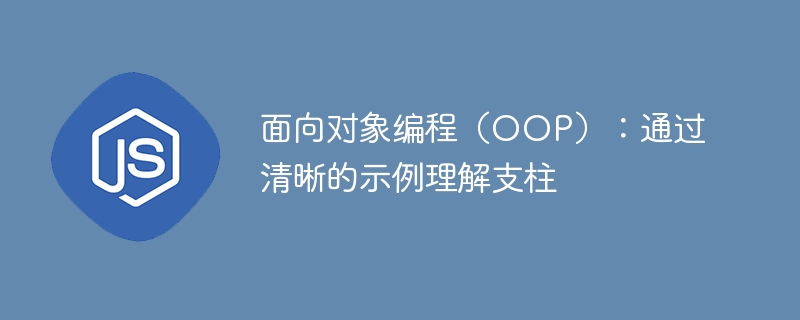面向对象编程(OOP):通过清晰的示例理解支柱

嘿开发者!今天我们要讨论的是面向对象编程(oop)。这种范例对于使用“对象”组织数据和行为至关重要。如果您正在准备求职面试,掌握这些概念会让一切变得不同。
我们将以清晰实用的方式探索 oop 的四大支柱,并举例帮助您轻松理解一切。
什么是面向对象编程?
oop 基于四个主要支柱:
- 封装
- 继承
- 多态性
- 抽象
让我们通过 javascript 示例仔细研究一下每个支柱。
1. 封装
封装就像将您的物品存放在一个盒子里。您将所需的一切放入其中并控制谁可以访问它。这有助于保护存储的数据并确保对象的内部状态保持安全。
例子:
class user {
constructor(name, age) {
this.name = name;
this.age = age;
}
// public method
displayinfo() {
return `${this.name}, ${this.age} years old`;
}
// private method
_checkage() {
return this.age >= 18 ? 'an adult' : 'a minor';
}
displaystatus() {
return `${this.name} is ${this._checkage()}.`;
}
}
const user = new user('alice', 22);
console.log(user.displayinfo()); // alice, 22 years old
console.log(user.displaystatus()); // alice is an adult
在此示例中,_checkage 是不应直接访问的方法。它在内部用于帮助确定用户的状态,同时保持逻辑有序。
2. 继承
继承允许一个类(子类)从另一个类(超类)继承属性和方法。这使得重用代码和创建类层次结构变得更加容易。
例子:
class animal {
constructor(name) {
this.name = name;
}
makesound() {
return `${this.name} makes a sound.`;
}
}
class dog extends animal {
makesound() {
return `${this.name} barks.`;
}
}
class cat extends animal {
makesound() {
return `${this.name} meows.`;
}
}
const mydog = new dog('rex');
const mycat = new cat('mia');
console.log(mydog.makesound()); // rex barks.
console.log(mycat.makesound()); // mia meows.
这里,dog 和 cat 都继承自 animal。每个都实现了自己的声音,展示了继承如何允许自定义行为而不重复代码。
3、多态性
多态是不同对象以不同方式响应同一方法的能力。这允许具有相同名称的方法根据对象的类型具有不同的行为。
例子:
class shape {
area() {
return 0;
}
}
class rectangle extends shape {
constructor(width, height) {
super();
this.width = width;
this.height = height;
}
area() {
return this.width * this.height;
}
}
class circle extends shape {
constructor(radius) {
super();
this.radius = radius;
}
area() {
return math.pi * math.pow(this.radius, 2);
}
}
const shapes = [new rectangle(10, 5), new circle(3)];
shapes.foreach(shape => {
console.log(`area: ${shape.area()}`);
});
// output:
// area: 50
// area: 28.274333882308138
在这种情况下,矩形和圆形都有自己的面积方法,但根据形状类型调用相同的方法会产生不同的结果。这就是多态性的作用!
4. 抽象
抽象是隐藏复杂细节并仅暴露必要内容的过程。在 oop 中,这允许您使用对象而无需了解它们如何工作的所有复杂性。
例子:
class Car {
constructor(brand, model) {
this.brand = brand;
this.model = model;
}
start() {
console.log('Car started.');
}
stop() {
console.log('Car stopped.');
}
}
class ElectricCar extends Car {
charge() {
console.log('Electric car charging.');
}
}
const myElectricCar = new ElectricCar('Tesla', 'Model 3');
myElectricCar.start(); // Car started.
myElectricCar.charge(); // Electric car charging.
这里,car 类提供了基本方法,而 electriccar 则添加了充电功能。您可以在不知道每个部件如何工作的情况下使用汽车 - 您只需要知道如何启动和充电。
结论
就是这样!现在,您对面向对象编程的四大支柱有了更清晰的了解:封装、继承、多态性和抽象。这些概念对于编写更有组织性和可维护性的代码至关重要。
在您的项目中不断练习和应用这些原则,您将做好充分准备来应对面试和作为开发人员的日常挑战!
以上就是面向对象编程(OOP):通过清晰的示例理解支柱的详细内容,更多请关注其它相关文章!
